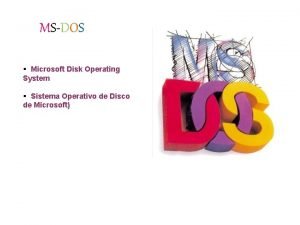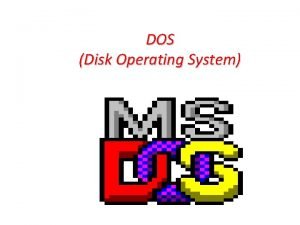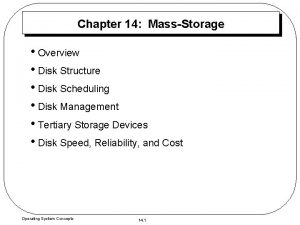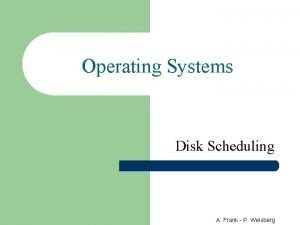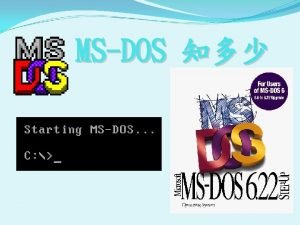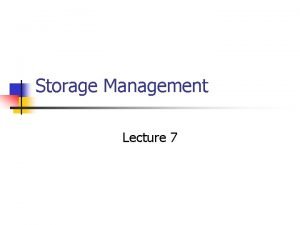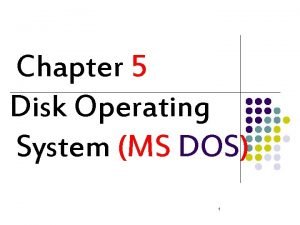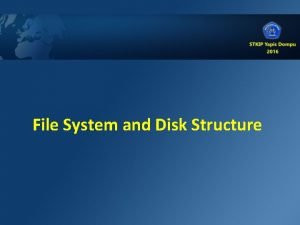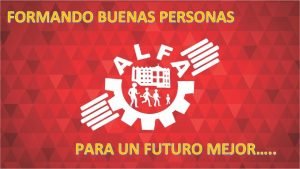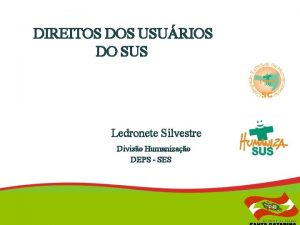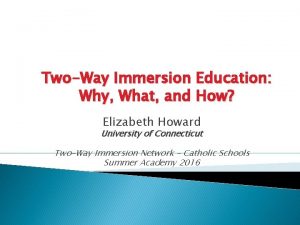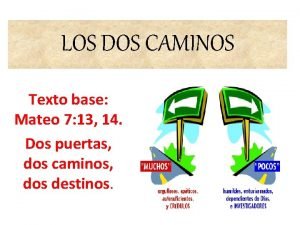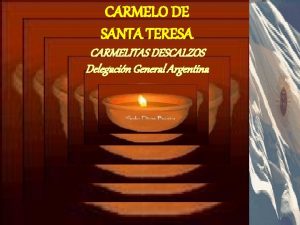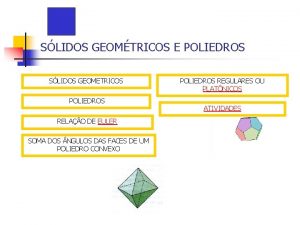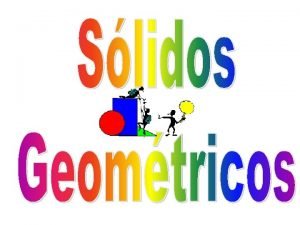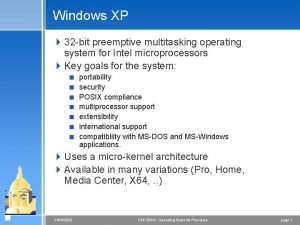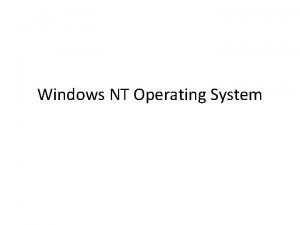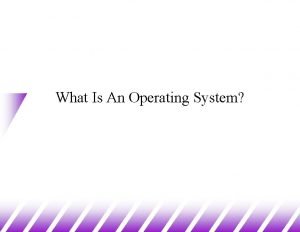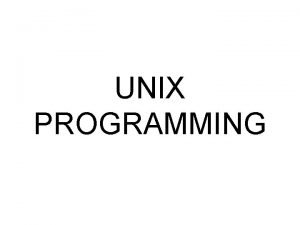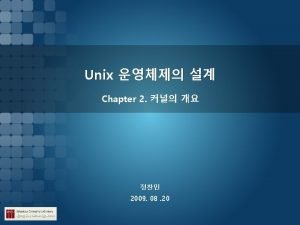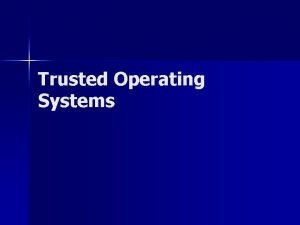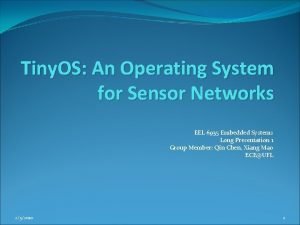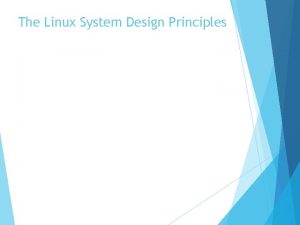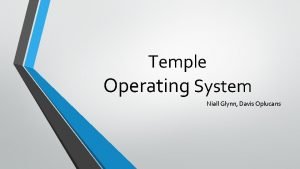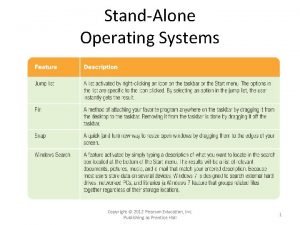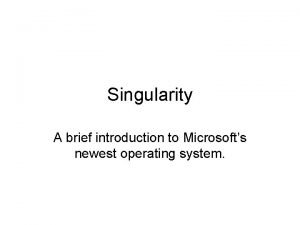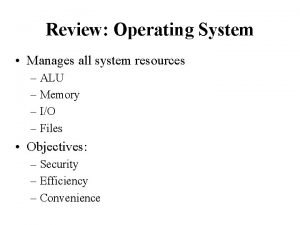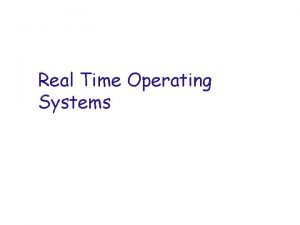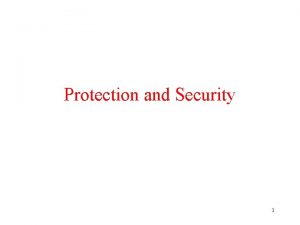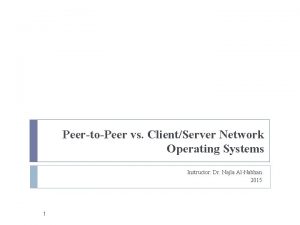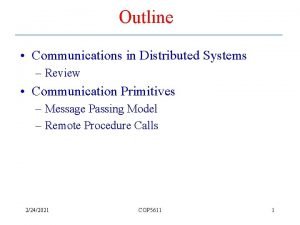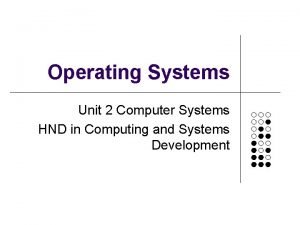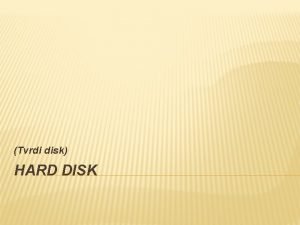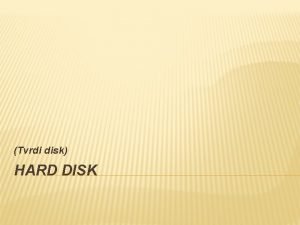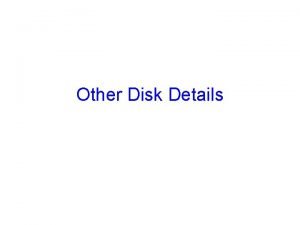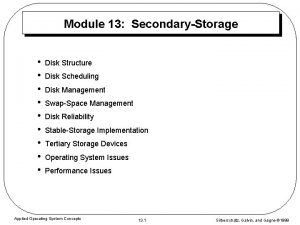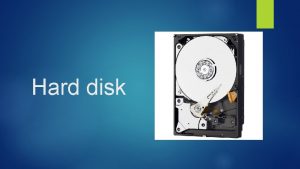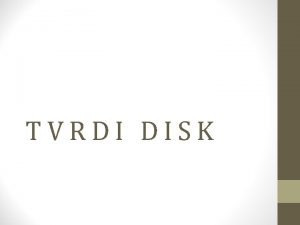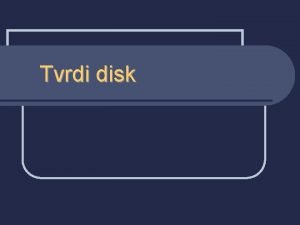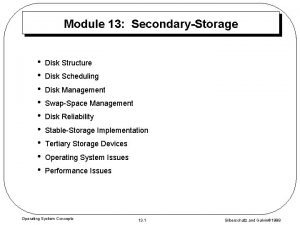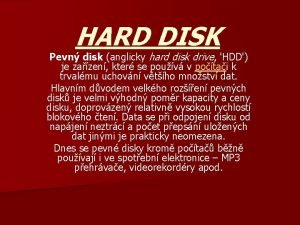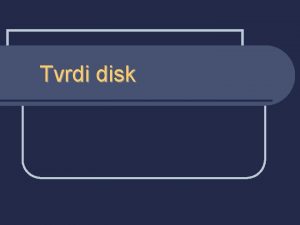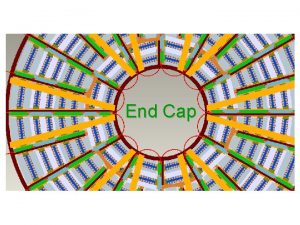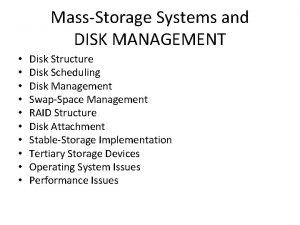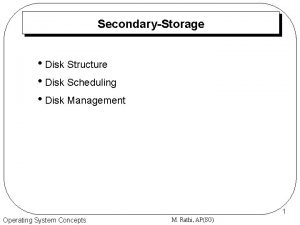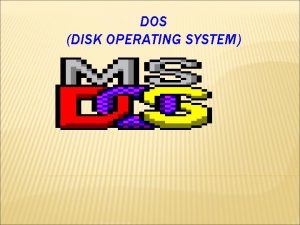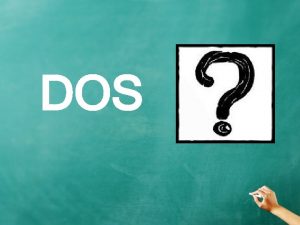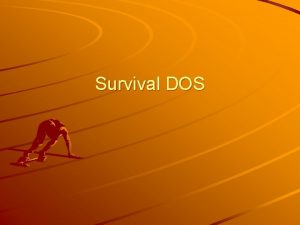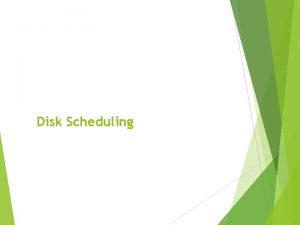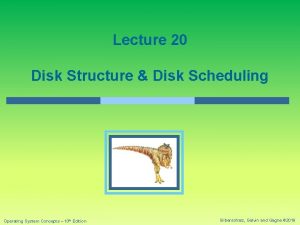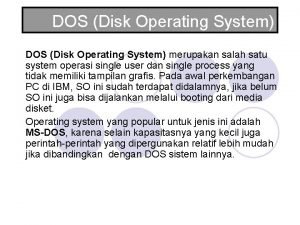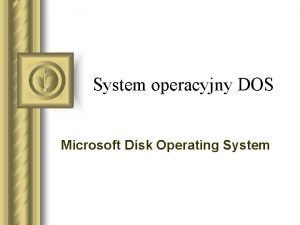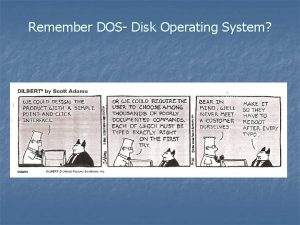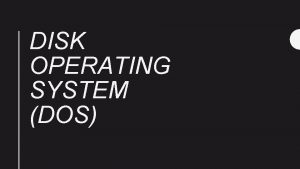DOS Disk Operating System What is an Operating










































- Slides: 42

DOS (Disk Operating System)


What is an Operating System ? – An Operating System is a set of programs that controls and coordinates the use of computer hardware among various application programs. – It provides an environment within which user can execute programs. – A computer can be divided into four components : • The Hardware, • The Operating System, • The Applications Programs, • The Users. – It is the operating system that manages all the above components.

What is an Operating System ? (CONTD. . ) – The various functions of the operating system are : • Controlling Input/output devices (Keyboard, Mouse, Monitor, Printer, Plotter etc. . ) • Memory and File storage management • CPU Scheduling and controlling processes • Loading, initiating, executing and supervising user applications programs • Handling errors and restarting • Providing command interface between user and computer system

What is an Operating System ? (CONTD. . ) – Examples of Operating system are : • MS-DOS • Windows 95/98 • Windows XP • Windows 7 etc.

Introduction to DOS / WINDOWS • Though UNIX was a powerful operating system available, but it was not suitable for 8 -bit 8086 microprocessor based Personal Computers. • So there was a need for a small operating system that could work in 640 K memory(RAM). • DOS was an variant of CP/M (Control Program/Monitor) which ran for the first time on IBM-PC in 1981. • It is called so because it resides on Floppy or Hard disk and provides command level interface between user & the computer hardware.

Introduction to DOS / WINDOWS (CONTD. . ) • The different versions of MS-DOS have evolved over a period of time with Microsoft introducing new features in each new releases. • Starting with MS-DOS 1. 1, the latest version was MS-DOS 6. 22 released in 1994. • There are various versions of DOS like MS-DOS(Microsoft), PCDOS(IBM), Apple DOS, Dr-DOS etc.

Introduction to DOS / WINDOWS (CONTD. . ) • WINDOWS was similar to APPLE ‘s Mach operating system interface on IBM-PC. • The main features of windows are: – Easy to Use Graphical User Interface (GUI), – Device Independent Graphics and – Multitasking Support. • The first version of windows 1. 0 was introduced in 1985. • Windows was an application of MS-DOS using the basic commands of DOS.

Introduction to DOS / WINDOWS (CONTD. . ) • Windows for Workgroup (WIN 3. 11) released in 1992 was an integrated windows & networking package with file and printer sharing capabilities, a network mail (Microsoft Mail) and a workgroup scheduler (Schedule+) packages in windows environment. • WINDOWS-95 released in 1995 is a 32 -bit operating system which includes MS-DOS 7. 0 and takes control of computer system after starting.

Introduction to DOS / WINDOWS (CONTD. . ) • The main features of WINDOWS-95 are: – Windows 95 is easier to learn and use than any of its predecessors. – Windows 95 and its applications run under the PCs protected mode, which mean that one ill behaved program cannot compromise the memory and resources of another. – This approach adds a large measure of reliability to the total operating environment. – The crash of a single errant program does not automatically crash the operating system or any of other programs that your running.

Introduction to DOS / WINDOWS (CONTD. . ) – Windows 95 is a Pre-Emptive Multitasking means that programs running in the background do not significantly degrade the interactive program that you are running in the foreground – E. g. : you can comfortably type into word processors while your database system backs up all its files. – Under Windows 3. 1 the typed key displays lagged behind while the backup procedure logged the processor. – Windows 95 integrates virtually all of your computing tasks & resources like networks, E-mail, Multimedia, System Administration, Printing, Faxing, applications into one common user interface.

What is Booting ? – When the computer is switched on, the firmware program in Read Only Memory(ROM) also called Basic Input-Output System(BIOS) reads programs and data i. e. Operating System and loads it into memory (RAM). – This process is known Bootstrapping(Booting). – The OS once loaded: – Takes control of the computer, – Handles user interaction and – Executes application programs.

Booting Sequence – During Booting process, computer loads the operating system into its memory. – DOS booting involves reading following files into memory namely IO. SYS, MSDOS. SYS, and COMMAND COM. contd. .

Booting Sequence • The Basic Input/output Program (IO. SYS): – This program provides interface b/n the Hardware devices & Software of the system. – It takes care of the keyboard input, character output to monitor, output to printer & time of the day.

Booting Sequence (contd. . ) • The File and Disk Manager Program (MSDOS. SYS): – It contains the file management and the disk buffering management capabilities. – It keeps track of all the disk access of an application program and remains permanently in memory.

Booting Sequence (contd. . ) • The Command Processor (COMMAND. COM) : – It is also called Command Interpreter. – It is the program that displays the system prompt and handles user interface by executing the command typed in by the user using keyboard

The CONFIG. SYS file : • This file contains reference to device drivers which are loaded when OS takes control of the computer. • This device drivers are required for configuring operating system for running special devices.

The AUTOEXEC. BAT file : • This is a special batch program that is automatically executed when the system is started. • It can be used to define keys, define the path that MS -DOS uses to find files, display messages on the screen etc. • It will be executed only if it exists in the root directory or the diskette from which the system is loaded.

The AUTOEXEC. BAT file : (contd. . ) • Each time the system is started, MS-DOS executes the commands stored in AUTOEXEC. BAT file. • It can be run without restarting the system by typing AUTOEXEC at the command prompt.

Disk/Drives : • The user can store data or programs on secondary storage devices called Hard disk or Floppy disk. • Physically disks store data by recording any pattern of magnetic changes on using a tiny read-write head that moves over the surface. • Disk is divided into sectors and tracks. contd. .

Disk/Drives : (contd. . ) • The first two characters of alphabet (a: or b: ) are reserved for Floppy disks, Hard disks are identified by characters (c: ) or (d: ), the next character in the sequence is assigned to Compact Disk (CD-ROM) drive further the network drives connected to the system are assigned the remaining characters.

Directory : • It is a special type of file that contains other files. • The relation between files, directories and disk is very similar to the relation between papers, filing folders and filing cabinets. • The hierarchy in which directories are kept is called a Tree Structure.

Definition of a file : File Names • Information or data is stored on a disk in the form of a file. • When storing any file, it must be given a unique name, which can be used for subsequent identification/reference. • Filenames should not be longer than 8 characters, can have an extension which should not be longer than 3 characters. • Following characters are valid in a filename : A to Z , a to z, 0 to 9, !, @#$%&(){}_-’.

Definition of a file : File Names (contd. . ) • Different files are identified by their extensions. • File which have extension EXE, COM, BAT are executable files. • They can be executed by just typing their name at the command prompt. • Extensions TXT, DOC, BAK, BAS, C represent text file, Documentation (MS-Word) file, Backup file, basic program file, C program file respectively.

Wildcards Definition • To retrieve and identify file, we can use its specific name or may refer to it with the help of wildcards which can even refer to entire group of files. contd. .

Wildcards Definition (contd. . ) • There are two wild card symbols : – asterisk (*) indicates that any or a one valid character can occupy that position or of the remaining positions in the filename or extension, – Question mark (? ) means that any one valid character can occupy that position.

Warm and COLD Reboot • Switching on of the computer from Power off and loading the operating system is called "Cold Boot". Boot This generally starts with memory test and chips initialization. • There may be case when the computer is already on or has hanged up and we want to reboot the system. This is known as "Warm Boot" Boot and is done by pressing Ctrl+Alt+Del keys simultaneously or just by pressing "Reset" button on the system.

Types of DOS commands • Any instruction given to the computer to perform a specific task is called Command. • The DOS has several commands, each for a particular task and these are stored in DOS directory on the disk. • The commands are of two types : – Internal Commands : – External commands :

a)Internal Commands : • These are in built commands of MS-DOS i. e. these are stored in Command interpreter file (COMMAND. COM). COMMAND. COM • These commands reside in the memory, as long as the machine is at he system prompt(C: >) C: > level. • To use these commands no extra /external file is required. E. g. DATE, TIME, DIR, VER etc. (b)

External commands : • These are separate program (. com). com files that reside in DOS directory and when executed behave like commands. command • An external command has predefined syntax for e. g. HELP, HELP DOSKEY, DOSKEY BACKUP, RESTORE FORMAT etc.

13. BASIC DOS COMMANDS : a) Directory Commands : • DIR : To list all or specific files of any directory on a specified disk. • MD : To make directory or subdirectory on a specified disk/drive. • CD or CHDIR : Change DOS current working directory to specified directory on specified disk or to check for the current directory on the specified or default drive. • RMDIR or RD : Removes a specified sub-directory only when it is empty. This command cannot remove root directory (C: ) or current working directory. • TREE : Displays all of the directory paths found on the specified drive. • PATH : Sets a sequential search path for the executables files, if the same are not available in the current directory. • SUBST : Substitutes a string alias for the pathname and creates a virtual drive.

13. BASIC DOS COMMANDS : b) File Management Commands : • COPY : Copies one or more files from source disk/drive to the specified disk/drive. • XCOPY : Copies files and directories, including lower-level directories if they exists. • DEL : Removes specified files from specified disk/drive. • REN : Changes the name of a file(Renaming). • ATTRIB : Sets or shows file attributes (read, write, hidden, Archive). • BACKUP : Stores or back up one or more files/directories from source disk/drive to other destination disk/drive. • RESTORE : Restores files that were backed up using BACKUP command. • EDIT : Provides a full screen editor to create or edit a text file. • FORMAT : Formats a disk/drive for data storage and use.

13. BASIC DOS COMMANDS : c) General Commands : • TIME : sets or displays the system time • DATE : Sets or displays system date. • TYPE : Displays the contents of at the specified file. • PROMPT : Customizes the DOS command prompt. • If a users requires help on any DOS commands he/she may type help and command name at the command prompt.

WINDOWS-95 • THE DESKTOP – The most visible change in Windows 95 over earlier versions of Windows is the new user interface. – The full screen display you see when you boot your PC and from which you work with documents and applications. – Icon : • An icon is a picture. • Windows 95 uses small video icons that represents objects – documents, applications, folders , devices, and computers. • An icon has a text label that further describes the object.

WINDOWS-95 (contd. . ) • Selection : • Selecting an object is pointing to it without taking any further action. • To select the object, move the mouse cursor onto the icon and press the left mouse button once. • If the currently selected object is in a group, you can change the selected object with arrow keys. • You can change groups with Tab and Shift- Tab keys and then use arrow keys to select an object in the selected group.

WINDOWS-95(contd. . ) – Drag and Drop : • To drag and drop an object onto another object, move the mouse cursor onto the icon of the object to be dragged. • Press down the left mouse button and hold it down while you move mouse cursor to be destination object’s icon. – Release the button from that position to complete the drop.

WINDOWS-95(contd. . ) • The Right Mouse Button : • If you move the mouse to almost anywhere or anything on the desktop or in a Window and click the right mouse button, Windows 95 displays a menu with common commands for the object. • To close the menu, click the left mouse button anywhere else on the desktop or press the keyboard’s Esc key.

WINDOWS-95 (contd. . ) – Icons on the Desktop : • The upper left corner contain four icons. • Those icons provides access to your files and documents. • Four icons are: My computer, Network Neighborhood, Recycle bin and briefcase. – My Computer : • The "My Computer" icon on the desktops opens a view into the resources of the local computer. • The contents of the My computer Window depend on the disk drives on your PC and the network support that is installed.

WINDOWS-95(contd. . ) – Network Neighborhood : • This icon displays the computers and shared printers connected on the windows network. – Recycle Bin : • This icon receives all deleted objects like files, folders, documents, applications etc. • This deleted objects can be retrieved back by dragging it out of the recycle bin and dropping it onto the desktop or into a folder or they can be permanently deleted from the disk by choosing EMPTY RECYCLE BIN selection on the file menu.

WINDOWS-95 (contd. . ) – Briefcase : • The commonly used personal documents can be put or stored in the briefcase. • This briefcase can be moved to a disk or copied across a network. – Putting new objects on the desktop : • New objects can be added to the desktop by dragging and dropping them from other locations or creating them on the desktop.

FOLDERS: • Folders on the desktop can contain other folders, folders documents, documents applications and shortcuts to devices such as printer. • To add a folder to the desktop, move the mouse cursor to an empty spot on the desktop and press the right mouse button. • Click the Folder command. • A folder icon labeled "New Folder" Folder appears on the desktop. • Label can be changed by selecting it. • Drag the folder to a convenient place on the desktop.

DOCUMENTS : • The reference to the current documents are stored in the documents object. • The documents list includes Word processing documents, spreadsheets, database files, graphics file etc.
 Ms dos 1
Ms dos 1 Dos internal and external commands
Dos internal and external commands Bad disk
Bad disk Disk scheduling policies
Disk scheduling policies Microsoft disk operating system
Microsoft disk operating system Disk storage types
Disk storage types Ms dos operating system
Ms dos operating system Buddy system memory
Buddy system memory File system in operating system
File system in operating system File system in operating system
File system in operating system File system in operating system
File system in operating system Disk file system
Disk file system M/s a k/h
M/s a k/h Los dos reyes y los dos laberintos que tipo de cuento es
Los dos reyes y los dos laberintos que tipo de cuento es Defesa dos direitos dos usuários pnh
Defesa dos direitos dos usuários pnh El que habla dos idiomas vale por dos
El que habla dos idiomas vale por dos Donde habla la biblia de los dos caminos
Donde habla la biblia de los dos caminos Los envió de dos en dos
Los envió de dos en dos Imagens de poliedros
Imagens de poliedros Número de vértices da base
Número de vértices da base Open closed and isolated system
Open closed and isolated system Circularory system
Circularory system Microsoft xp is
Microsoft xp is Features of windows nt operating system
Features of windows nt operating system ________ is an example of operating system. *
________ is an example of operating system. * Before operating system
Before operating system Salient features of unix operating system
Salient features of unix operating system Block diagram of system kernel
Block diagram of system kernel Trusted os
Trusted os Tiny operating system
Tiny operating system Linux design principles
Linux design principles Temple os games
Temple os games Stand alone operating system
Stand alone operating system Single user and multiple user operating system
Single user and multiple user operating system Singularity operating system
Singularity operating system The operating system manages
The operating system manages Gpos and rtos
Gpos and rtos Security and protection in operating system
Security and protection in operating system What are the features of network operating system
What are the features of network operating system Components of operating systems
Components of operating systems Communication primitives in distributed operating system
Communication primitives in distributed operating system Virtual memory in os
Virtual memory in os Process management in operating system
Process management in operating system
